FAQ
Frequently Asked Questions about the San Diego River Park Foundation
The San Diego River Park Foundation’s core support are donations from the community- from individuals, businesses and others. We use this support to secure grants from charitable foundations and government agencies and to support our volunteer-based initiatives. Read more about our financials or learn about how you can help support us.
There are many ways for your company to get involved, ranging from Annual Support, employee volunteer events, in-kind donations, and event sponsorship. Please contact our Development Director for more information.
We do offer internship opportunities in several different fields, ranging from habitat restoration and urban planning to special events. We invite highly motivated, passionate candidates to learn more about open positions.
We need volunteers of all abilities and interests! In general, we welcome volunteers of all ages, but volunteers 15 and under must be accompanied by an adult. The River Park Foundation holds events at a variety of locations along the San Diego River, and each site varies in accessibility and being appropriate for young children. Please call us at (619) 297-7380 or email us for questions about specific events, and we are happy to help you find an event that meets your particular needs.
The best way to stay informed about upcoming opportunities is to sign up for our free monthly e-newsletter. You can also click here to see a listing of upcoming events.
The San Diego River Trail is a multi-use trail accessible to pedestrians and non-motorized use. In many places, the River Trail is also ADA accessible, including the trail from Ocean Beach to Sefton Field, and much of the trail in Mission Valley and Santee. If you have questions about accessibility of certain trail segments, please give us a call at (619) 297-7380 or email us info@sandiegoriver.org.
Absolutely! Take your kayak out and enjoy the beauty of the river system at Lake Murray or Lake Cuyamaca. You can fish in many places including Mission Trails Regional Park. Watch for private property and any wildlife preserves which may have restrictions. El Capitan Reservoir is also a terrific place for recreation.
Non-native plants are any plant species that is not originally from here. Some non-native plants are: chrysanthemum, palms, eucalyptus trees, arundo donax, salt cedar, iceplant, wild radish, Russian thistle, crown daisies, and nasturtiums.
Non-native species pose a risk to the San Diego River and its wildlife. These exotic species can displace beneficial natives, on which native wildlife rely for food and habitat, and also typically consume more water, leaving less for animals and other plants. Non-native plants are also, in many cases, not as fire-resistant as native vegetation.
Actually the River in many ways isn’t too dirty. In the urban area, runoff from adjacent communities carry pollutants from streets, parking areas and other developed areas. Trash along the river is largely the result of homeless encampments (75% based uponour October 2013 survey).
Visit our Recreation Areas to find a location nearest you. We also have a PDF brochure that will highlight some great features.
Yes, we are committed to practicing respect and always take a non-confrontational approach to interactions with people living in the riverbed. Our data is used to help provide services to people experiencing homelessness and living in the riverbed. Safety is a significant concern, though, as we have unfortunately seen people in harm’s way from flooding, illness and other medical emergencies, fire and other issues associated with living in a floodplain. We have partnered with an org that specializes in delivering and connecting with services (PATH) to bring additional resources to our unhoused neighbors in the riverbed, and our RAFT volunteers work closely with a riverbed outreach specialist. This is a complex issue of course, but our RAFT volunteers can play an important role in reducing the number of people experiencing homelessness in these environmentally sensitive lands by informing supportive outreach, and that’s a win-win.
